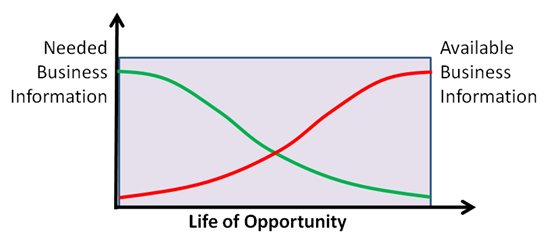Val Workman
The opinions expressed by the bloggers below and those providing comments are theirs alone, and do not necessarily reflect the opinions of Ryma Technology Solutions. As they say, you can't innovate without breaking a few eggs...
- Font size: Larger Smaller
- Hits: 28981
- 0 Comments
- Subscribe to this entry
- Bookmark
Product Portfolio Management: Things to Consider
There are many approaches to market-driven product development, some will take market evidence and create problem statements, others will go right to feature definition or even requirement definition. Regardless of the approach, the team must have some way to identify the evidence they should pursue, out of all the evidence they could pursue.
I believe product portfolio management processes for opportunity selection and prioritization are the weakest facets of all new product management activities. I suppose there are a lot of reasons for this, and not all are our fault, but we can do some things about it. But first it helps to understand why this is so difficult for product management teams.
- The well known "Stars, Cash Cows, Dogs..." from the Boston Consulting Group (BCG) or “Business Position vs Market Attractiveness" from the GE/McKinsey models have resources allocated to the business units instead of the product, and metrics are collected using annual data which is readily available. In the case of products, resources are being allocated to products that might not even exist yet, and very little data is available. This graph shows that the needed business information that traditional portfolio methods use just isn't available in the early parts of the product's lifecycle, which is where the activities of product management reside (red line). It also illustrates that this area in the product's lifecycle is where the most information is needed (green line).

- The market evidence is dynamic: always changing in ways that will affect the validity of your decisions.
- Resources must be competed, allocating resources to one product means another is going to be going without. Unlike money being managed in money portfolios, people can't just be transferred, there is a loss experienced every time a transfer happens due to ramp-up times in a new program.
- Projects are interconnected in a new product portfolio, unlike a stock market portfolio where investments are independent of each other. This makes understanding the dependencies and relationships more critical for the product management team.
- Projects in a new product portfolio are in different stages of their lifecycle. The problem here is that your always being asked to compare apples to oranges, where some projects you know a lot about and others you know very little about.
For your product portfolio management methods to be meaningful, it must support the five capabilities of portfolio management. Many methods being used in product portfolio management are missing one or more of these capabilities, and of course they fail.
- List Alternatives: This is perhaps the biggest challenge for the product management team on a day-to-day basis. We partition our list of product alternatives to provide insight and support analysis. Creating the optimal list of alternatives is really what product management boils down to. This includes market segmentation, product configuration, and target pricing.
- With an optimal list of choices, selection criteria must be identified. With the right selection criteria, partitioning the portfolio into optimal sub-portfolios becomes possible. This activity is tied to the strategic planning of the organization, product-line, and product and is seldom done by the product management team. A product charter is a must of product portfolio management, which can help provide guidelines and constraints for selection criteria, and identify the weights of each of the selection criteria using the stakeholder's value system.
- Metrics used to measure and monitor the portfolio must be identified. The most common issue here is using the right kind of metric for the type of data available and type of arithmetic going to be performed. Many product managers find themselves adding two metrics: one with the value of 'high' and the other with a value of 'med'. Don't get caught in this trap, define the right metrics for the job.
- Establish, maxim and minim thresholds for each metric. It’s important to provide a range and not to set a single value for the threshold. A single value will constrain innovation.
- Resource availability is the number one thing that is missing from most product portfolio decision making processes. You must be able to determine availability, and impact on availability. You can select winning projects until the cows come home, but if you don't have the resources to do them, it’s all in vain.
I've tried to provide insight into product portfolio management and some of the issues that need to be considered. Please feel free to make any comments that you feel can contribute to the success of others.








